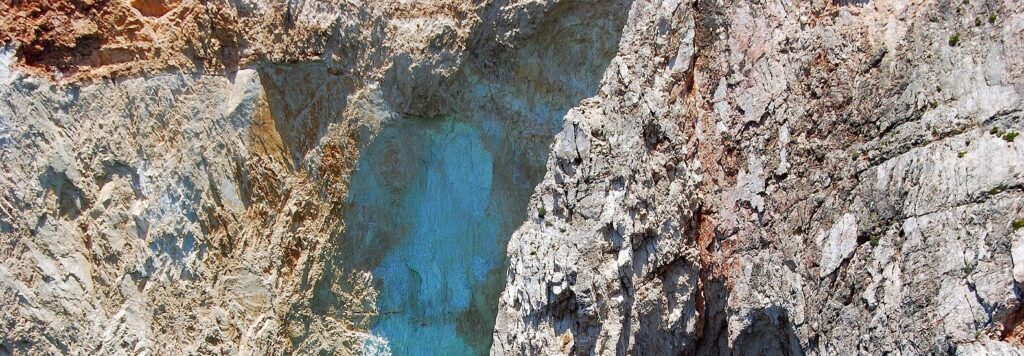
Audience
- Sentiment: optimistic
- Political Group: environmentalists
- Age Group: adults
- Gender: all genders
Overview
- Scientists are utilizing ordinary rocks to combat climate change by capturing carbon dioxide.
- Heating limestone and magnesium-rich silicates can significantly speed up the natural carbon sequestration process.
- This innovative method not only helps reduce CO2 levels but can also enhance soil quality when used as fertilizer.
Transforming Ordinary Rocks into Carbon Capture Solutions
Have you ever looked at a rock and thought it was just a boring piece of nature? You might be surprised to learn that our planet’s rocks could play a crucial role in combating climate change! Scientists are now using everyday rocks to create an innovative solution aimed at reducing carbon dioxide (CO2) levels in the atmosphere and potentially reversing some of the effects of global warming. In this article, we will delve into how this revolutionary method works, why it is essential, and what it means for our future.
The Science Behind Rocks and Carbon Dioxide
At its core, the idea of using rocks to capture carbon dioxide stems from a natural reaction that occurs over millions of years. In the environment, carbon dioxide from the atmosphere can react with certain minerals, causing those minerals to transform and trap the CO2. This process not only removes CO2 from the air but also converts it into a solid form, helping to mitigate the greenhouse effect.
The scientists behind this new method focus mainly on two types of rocks: limestone and magnesium-rich silicates like olivine. Limestone, primarily made of calcium carbonate, is a common sedimentary rock. Olivine, on the other hand, is a greenish mineral often found in volcanic rocks. While the natural process of carbon sequestration can take thousands of years, researchers have discovered that by heating these minerals, they can massively speed up this reaction.
Imagine heating your food in a microwave versus cooking it in a conventional oven. The microwave heats it quickly, allowing for faster cooking times—that’s essentially what scientists are doing with rocks. By applying heat to the limestone and olivine mixture, the chemical reactions occur in mere weeks instead of millennia. This is not only an exciting breakthrough but also a practical approach to addressing one of the most urgent issues facing our planet.
The Potential Impact on Climate Change
The impacts of climate change are evident around the world. From rising sea levels to extreme weather events, the effects of global warming are becoming more severe. A significant contributor to climate change is the increase in CO2 levels due to human activities like burning fossil fuels for energy, deforestation, and industrial processes. When too much carbon dioxide accumulates in the atmosphere, it creates a greenhouse effect, trapping heat and causing the planet’s temperature to rise.
By using this innovative rock-based method to capture carbon, scientists hope to take steps toward reducing atmospheric CO2 levels significantly. The rock mixture, after it absorbs carbon dioxide, can be further utilized in agricultural settings. When the captured carbon is turned into a form of fertilizer, it could potentially enhance soil quality and promote healthy plant growth. In this way, the rocks do double duty—helping the environment while providing essential nutrients for farmers.
The Journey of Everyday Rocks
It’s fascinating to consider how ordinary rocks can transform into high-tech carbon capture solutions. Think about the last time you walked past a rock on the street or noticed a pile of stones in your backyard. These humble materials, often dismissed as unremarkable, have the potential to revolutionize the way we think about carbon emissions. By utilizing widely available minerals, researchers are looking for ways to make their methods not only effective but also affordable.
One question that often arises in discussions about technological advancements is whether they can be scaled for widespread use. While scientists believe this rock-based method shows great promise, there are ongoing debates about whether it can be implemented on a large scale and how the energy costs might affect the overall efficiency of carbon capture.
In an ideal world, we would need a system that not only makes sense economically but also fits seamlessly into existing structures. Researchers are examining how this rock-based capture could be set up in various locations, whether in urban areas where CO2 emissions are high or in rural regions where it can benefit farmers.
Looking Towards the Future
While there are numerous challenges ahead, the long-term vision for this technology could be transformative. With continued research and development, scientists hope to create a sustainable process where captured carbon is eventually sequestered in oceans. This would not only reduce the amount of CO2 in the atmosphere but also help maintain a balance in the carbon cycle.
Moreover, the idea of using this customary mineral mixture as fertilizer has exciting implications for farming. The world depends on agriculture for food, and this innovative solution could help us grow crops more sustainably while simultaneously working against climate change. Farmers might one day enhance their soils and absorb atmospheric carbon simply by spreading a new form of fertilizer derived from rocks!
Conclusion: A Call to Action
As we explore the potential of turning ordinary rocks into extraordinary solutions for climate change, it becomes clear that every one of us shares a responsibility in safeguarding our planet. While scientists and researchers are working hard to develop these technologies, there’s much we can do individually and collectively to help combat climate change.
Small actions in our daily lives—reducing waste, conserving energy, recycling, and staying informed about climate issues—count, too. With that said, the notion that everyday rocks could be a part of the solution is both inspiring and hopeful. It’s a reminder of how innovation can come from the most unexpected places.
So, what do you think about the idea of using rocks to capture carbon? Does it inspire you to learn more about climate change or get involved in environmental issues? We’d love to hear your thoughts! Share your opinions in the comments below—what are some ways you think we can help combat climate change in our communities?






